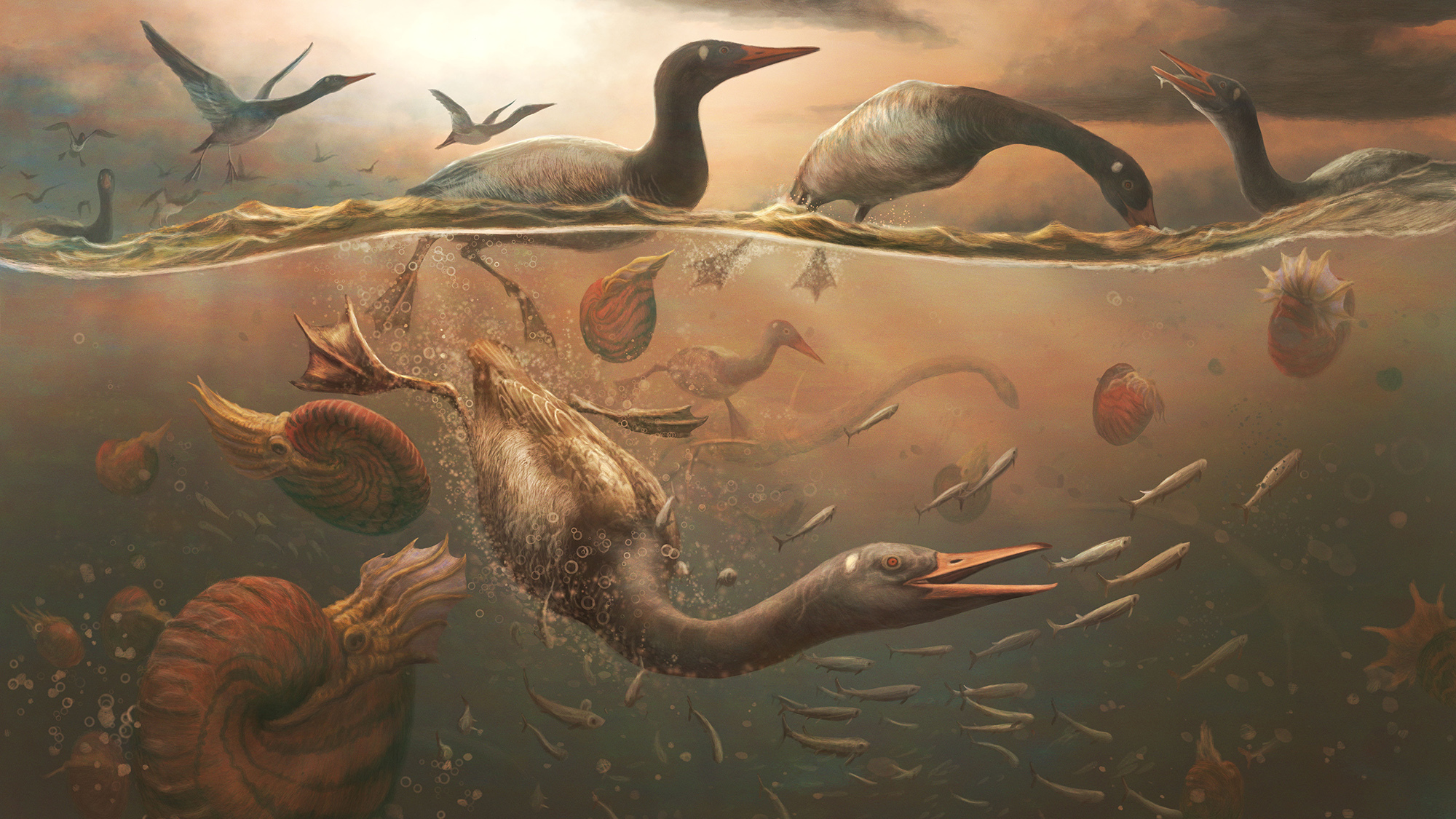
After the asteroid, the earliest bird ancestors thrived in Antarctica
www.popsci.com
With its glaciers and sub-zero temperatures, Antarctica hardly seems like a place of refuge. However, the now icy continent might have been just that for the early ancestors of todays living waterbirdsespecially after an asteroid slammed into the Earth. A newly described fossil indicates that an early relative of ducks and geese called Vegavis iaai lived in Antarctica the same time that Tyrannosaurus rex was stomping around North America. The fossil is described in a study published February 5 in the journal Nature and shows that the continent was a key location in bird evolution. Get the Popular Science newsletter Breakthroughs, discoveries, and DIY tips sent every weekday. By signing up you agree to our Terms of Service and Privacy Policy.After a dinosaur-killing asteroid struck the Earth near the Yucatn Peninsula in present day Mexico about 66 million years ago, about 75 percent of species on Earth eventually went extinct. However, Antarctica may have been somewhat protected because of its distance from the impact site. Fossil evidence suggests that the landmass had a temperate climate with lush vegetation, so it could have been the perfect location for the earliest members of the avian group that now includes geese and ducks.The fossil in this new study was collected in 2011 during an expedition by the Antarctic Peninsula Paleontology Project. It is a nearly complete Vegavis iaai skull, one of the earliest known birds dating back to the latest part of the Cretaceous Period (roughly 69.2 to 68.4 million years ago). The authors generated a near-complete three-dimensional reconstruction of the new skull to study its anatomy. They found that Vegavis has a long, pointed beak and a brain shape that is considered unique among all of the known birds previously discovered from the Mesozoic Erawhich includes the Triassic, Jurassic, and Cretaceous Periods. During the Mesozoic, non-avian dinosaurs and an eclectic collection of early birds such as Archaeopteryx flew in different parts of the Earth. Vegavis long beak and brain shape place itDigital reconstruction of the Late Cretaceous (~69 million years old) crown bird Vegavis iaai that was completed following high-resolution micro-computed tomography of a fossil-bearing concretion discovered on Vega Island, Antarctic Peninsula. CREDIT: Joseph Groenke (Ohio University) and Christopher Torres (University of the Pacific), 2025. Vegavis was first reported 20 years ago by study co-author Julia Clarke from The University of Texas at Austin and several colleagues. Initially, it was proposed as an early member of modern birds within the waterfowl group. However, modern birds are very rare in the fossil record from before the end-Cretaceous extinction, and more recent studies have shed some doubt on where Vegavis should be on the bird evolutionary tree.Few birds are as likely to start as many arguments among paleontologists as Vegavis, Christopher Torres, a study co-author and paleontologist at the University of the Pacific, said in a statement. This new fossil is going to help resolve a lot of those arguments. Chief among them: where is Vegavis perched in the bird tree of life?A pair of Vegavis iaai, the earliest known modern bird at 69 million years ago, foraging for fish and other animals in the Late Cretaceous ocean off the coast of the Antarctic PeninsulaCREDIT: Andrew McAfee (Carnegie Museum of Natural History), 2025. The nearly complete skull detailed in this new study puts some of that skepticism to rest. It shows several traits including the shape of the brain and beak bones that are consistent with that of modern birds, and waterfowl specifically. One of the main differences between modern waterflow is that Vegavis skull has traces of powerful jaw muscles that were useful for overcoming water resistance while diving to snatch fish.Additionally, the skull features and other parts of its skeleton suggest that Vegavis used its feet for underwater propulsion while pursuing fish and other prey. This feeding strategy is more like what gerbes and loons use.[ Related: All living birds share an iridescent ancestor. ]The known birds discovered in other parts of the planet from the late Cretaceous Period are barely recognizable by modern bird standards. Additionally, most of the sites that preserve delicate bird fossils from the Cretaceous yield specimens that are so incomplete that scientists can only get hints at their identity.This fossil underscores that Antarctica has much to tell us about the earliest stages of modern bird evolution, study co-author and Ohio University paleontologist Patrick OConnor said in a statement. And those few places with any substantial fossil record of Late Cretaceous birds, like Madagascar and Argentina, reveal an aviary of bizarre, now-extinct species with teeth and long bony tails, only distantly related to modern birds. Something very different seems to have been happening in the far reaches of the Southern Hemisphere, specifically in Antarctica.
0 Comentários
·0 Compartilhamentos
·65 Visualizações


